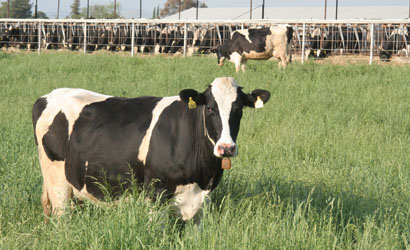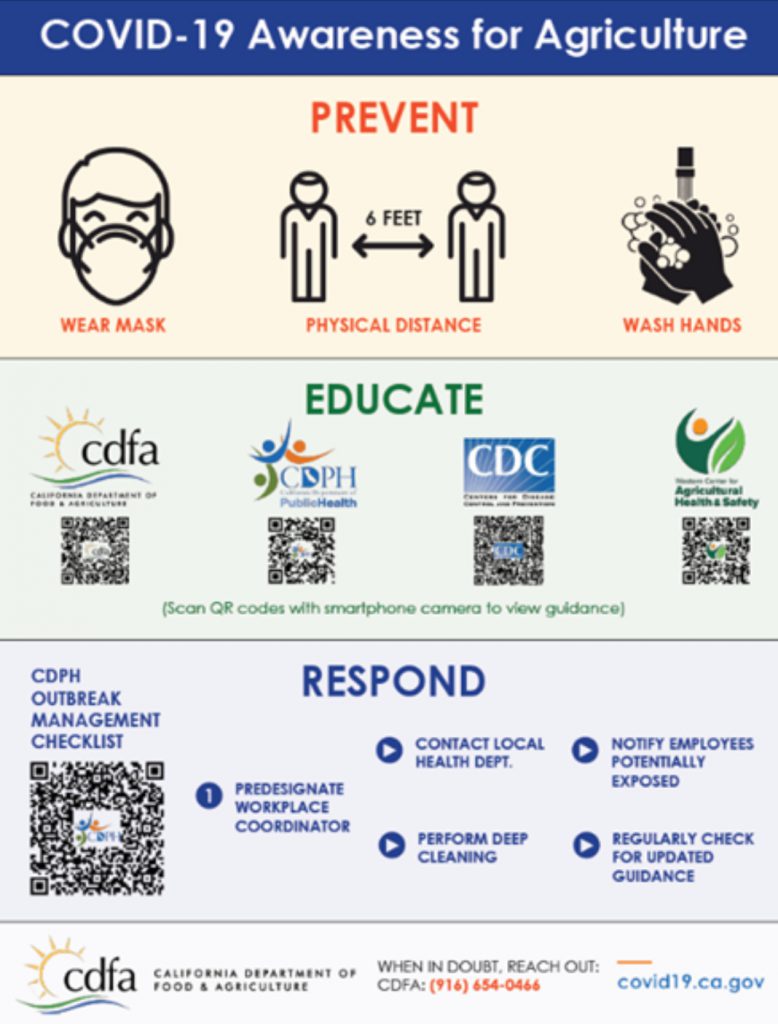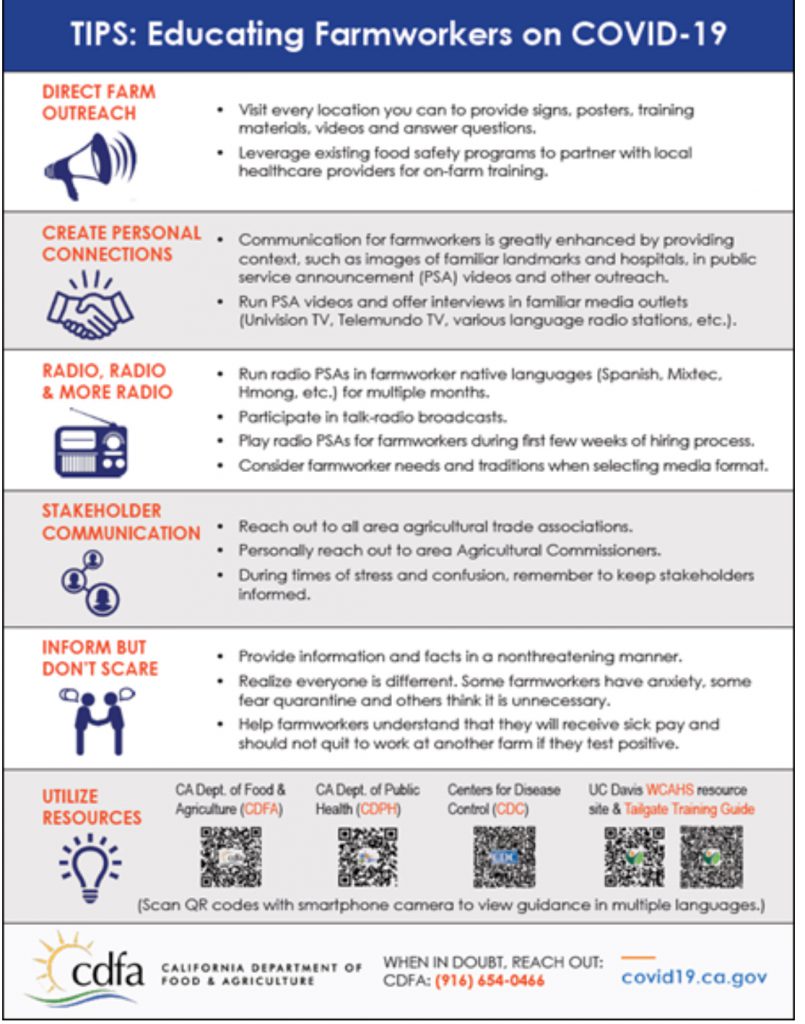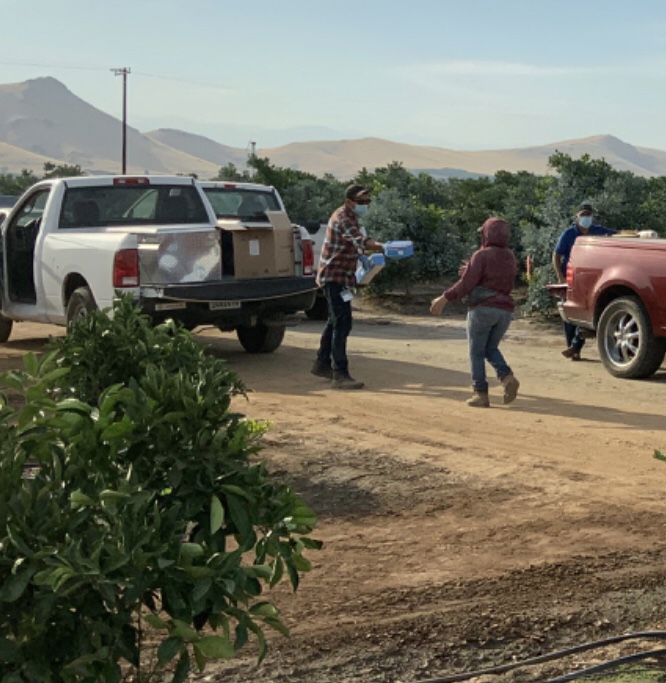The challenges and anguish of 2020 have impacted us all and exposed deep-seated disparities affecting people of color across all aspects of our society, which must be urgently addressed to create a more just and caring state and nation.
CDFA stands with the Black Lives Matter movement and recognizes the history of institutional and systemic racism in agriculture and its continued role in the present agricultural system. CDFA wishes to emphasize this with a statement of values about equity (viewable in English and Spanish through links and below) that was authored by a team of CDFA employees and shared in draft form for input from employees across the agency. The statement declares that racism and all other forms of bias and discrimination will not be tolerated. The agency will take the following actions to address this:
- Recognize and acknowledge the historic contributions of people of color to agriculture and food systems: Create an outreach and communications plan to feature people of color, farmers of color, and farmworkers on CDFA platforms, and highlight the important historical contributions of farmers of color to California agriculture as well as the history of systemic and institutional racism in agriculture in California.
- Prioritize recommendations contained within the Farmer Equity Report to address increasing the voices of farmers of color in decision-making processes, programs, boards and commissions.
- Create a task force of CDFA employees who will work with the CCORE (Capitol Cohort on Racial Equity) group to create a racial equity action plan. This will be a collaborative space where all staff can share resources and engage in meaningful conversation.
- Provide educational and training opportunities for all staff: CDFA will offer implicit bias training for all CDFA staff and research other potential training opportunities that could be offered to all staff.
CDFA will have a series of discussion forums about racism and equity, including an invited speaker series featuring perspectives from people of color and marginalized communities.
Here at CDFA, the work we do every day is vital to the nourishment of people, our economy and our environment. Over the next few months we will be engaging our employees and the public directly for input on how we as an agency can increase our understanding of the role of racism in the history of agriculture and the many ways in which we can affect change through our programs and our actions to ensure an end to racism.
The recent killings of George Floyd and other people of color underscore how historical systemic and institutional racism perpetuates violence against Black Americans, robbing families of their fathers, mothers, sons, daughters, brothers and sisters at an alarming rate. CDFA is taking the actions described above in the quest for meaningful change.
CDFA statement on racial equity:
Ongoing systemic and institutional racism and inequality continues to be experienced by Black people, other people of color, and marginalized groups on a regular basis. This is a plague in our country, and it must end.
The California Department of Food and Agriculture (CDFA) recognizes that there is a history of racism within agriculture and food systems, the effects of which are still present today. As a Department, we are committed to changing that reality and doing better on behalf of communities of color in California. This includes an ongoing steadfast commitment to eliminate institutionalized racism and inequity in all areas within the Department.
CDFA and its employees reject and condemn racism in its many forms, from the overt to the subtle. CDFA stands for reform, for inclusion, and for increased tolerance and understanding. CDFA is committed to an open and active pursuit of racial equity. We will move forward with the acknowledgment that there is much more we can and must do. We will start by evaluating the equity of our current activities, including opportunities in the workplace, access to programs that provide assistance, and sensitivity in interactions with the communities we serve.
We will seek advice from, listen to and partner with those impacted by racism and inequity. We are eager to do this work, to create genuine opportunities and ensure that our state is a California for All. In this time of heartbreak and despair, we stand with all of those who are suffering. We see you. We hear you. We support you. As a Department, we are committed to ongoing learning, improvement, and action as we move forward together.
In Spanish:
El racismo y la desigualdad sistémica e institucional sigue siendo sentida por la comunidad negra y otras personas de color y grupos marginados constantemente y esto sigue afectando a nuestro país.
El Departamento de Alimentos y Agricultura California (CDFA) reconoce que hay una historia de racismo dentro del sector agropecuario y en los sistemas alimentarios, cuyos efectos todavía están presentes hoy en día. Como agencia y departamento estatal, estamos comprometidos a cambiar esa realidad y hacerlo mejor en nombre de las comunidades de color en California. Esto incluye un compromiso constante y firme de eliminar el racismo institucionalizado y la inequidad en todas las áreas.
CDFA y sus empleados rechazan y condenan el racismo en todas su formas, desde lo más abierto hasta lo sutil o implícito. CDFA lucha por la reforma, inclusión y mayor tolerancia y comprensión. CDFA está comprometido a una búsqueda abierta y activa de equidad racial. Seguiremos adelante con el reconocimiento de que hay mucho más que podemos y debemos hacer. Comenzaremos evaluando la equidad de nuestras actividades actuales, al igual que las oportunidades en el lugar de trabajo, acceso a los programas que proporcionan asistencia y sensibilidad en las interacciones con las comunidades a las que servimos.
Buscaremos asesoramiento, escucharemos y nos asociaremos con aquellos afectados por el racismo y la inequidad. Estamos ansiosos por hacer este trabajo, para crear oportunidades genuinas y asegurar que nuestro estado es una California para Todos.
En este tiempo de angustia y desesperación, estamos con todos los que están sufriendo. Te vemos. Te oímos. Te apoyamos. Como departamento, estamos comprometidos al aprendizaje continuo, el mejoramiento y la acción a medida que avanzamos juntos.











